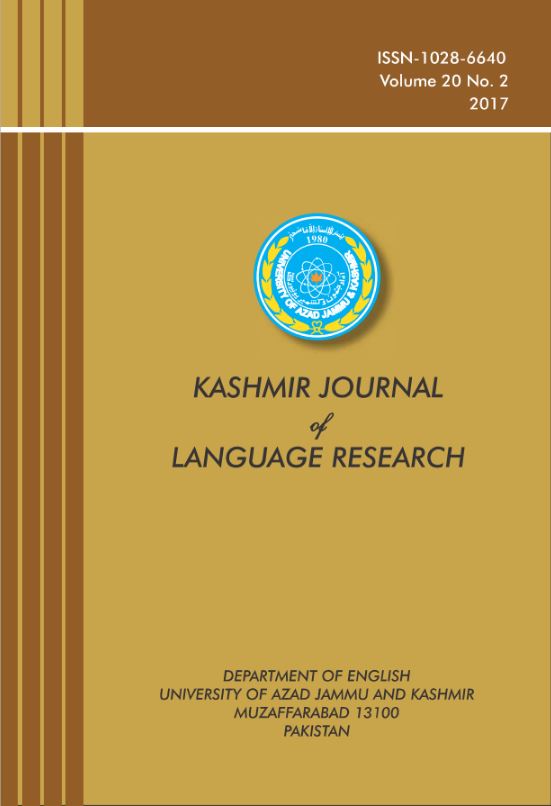Code Switching
Joshua’s Perspective of H and L Varieties Concordant to English and Urdu
Keywords:
Code-Mixing, Code-Switching, Interference, Borrowing, Diffusion, InterferenceAbstract
There is intersection of ‘H’ high prestigious variety English (so called) with so called ‘L’ Low variety Urdu in Pakistan. Pakistan is a multilingual country, where there is either mixing or switching of both of these two languages in formal context. Though this switching does not coincide with intersection of political boundaries yet its influence cannot be underestimated. In many situations of languages in contact, constituents of one language can be found with the constituents of another language in a number of linguistic phenomena, namely lexical borrowing, transferring, interference, calquing, diffusion, reflexification, code-switching and code-mixing, etc. The focus is to highlight the use and influence of Pakistani speakers regarding these languages used in their daily phenomenon from sociolinguistics’ perspective. There are certain fears and apprehensions of linguists and scholars about the influence of English code-mixing in Urdu, but yet we do not find any significant work on English code-mixing in Pakistani context. In order to investigate the problem of the study it is explored that if there is any code-mixing in Urdu language? It is descriptive research in which mixed method has been employed by having recording from an international conference and certain text messages. The result shows there is code switching in Pakistani speakers greatly which is used to facilitate the listeners or to put out oneself when not having the equivalent in L2. This code-switching is both from H to L and from L to H as the speakers use H in L in speaking and use L in H while texting.

Downloads
Published
Issue
Section
License
Copyright (c) 2022 Kashmir Journal of Language Research

This work is licensed under a Creative Commons Attribution 4.0 International License.




